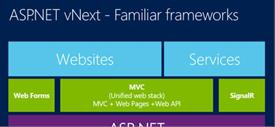5 Tips for Using LinkedIn for B2B Marketing
LinkedIn is an excellent marketing tool for B2B brands to generate more leads, create valuable connections, and improve relationships with prospects.
Establishing a presence on this channel will help you bring more qualified traffic to your website and improve awareness around your brand.
One post on the professional networking platform’s blog cites a study showing that LinkedIn is responsible for 80% of B2B leads and that 94% of B2B marketers use it to distribute content. With the website being home to well over 400 million users, it is likely that many of those users are businesses that your company could be working with.
So how can you transform a social employment platform into a powerful marketing tool? Here are 5 tips that’ll help you effectively use LinkedIn for B2B marketing.
Target Your Content
Use tools such as LinkedIn’s Website Demographics to learn more about who your target audience is and what makes them tick. This will help you produce targeted content that improves your brand image and encourages your audience to hit the share button, subsequently expanding your influence and reach.
Create an Effective Profile Page
Your profile page gives prospects an immediate impression of your business. Be sure to include professional images, a logo, key employee details, and relevant content that makes your company appear more human and approachable.
Surprisingly enough, your LinkedIn profile description is also affected by SEO. Be sure to optimize yours by including relevant keywords that will attract quality leads.
Tap into Foreign Markets
One thing that makes LinkedIn unique is that it is available in countries where other social networks aren’t. In China, it’s the only western social media platform that remains accessible to the 1.3 billion-strong population. Depending on your business, you can benefit from the Chinese market in numerous ways.
This can include leveraging their affordable manufacturing solutions or selling your services to China’s countless thriving businesses. That said, things work a little differently there. Consider enlisting the expertise of a specialized marketing agency, such as China DR Solutions, to help you effectively navigate and tap into Asia’s foreign markets.
Provide Value
Valuable content is what drives engagement, word of mouth, and exposure. Your LinkedIn profile should look more like a carefully curated feed of quality content and not an advertising board.
Produce content that is relevant to your industry and target audience. Posting relatable, informative, and purposeful content will drive interest around your brand and help you become a prominent leader in your industry.
Optimize Your Schedule
While you should avoid spamming your audience with waves of content, you also don’t want to get lost in the sea of posts from your competitors. Your LinkedIn content will be most effective if posted between Tuesday and Thursday at 5-6pm Central Time. A general rule of thumb is to stick to 3-4 weekly posts, coupled with 1-2 pieces of larger content.
Succeeding on LinkedIn is far from rocket science. Focus on nurturing a network of engaged followers by providing insightful value when and where appropriate. Get it right, and your business will quickly reap the benefits.
Related Posts
In almost all forms of modern business, marketing is an essential function.
As the world of eCommerce continues to evolve, businesses are constantly seeking ways to stand out in the digital landscape. According to a report by Statista, it is predicted that global online sales will reach an impressive mark of $6.5 billion by 2023.
In the era of high-speed internet, owning a server with a 10Gbps connection offers an unparalleled advantage in terms of data transfer speed, website performance, and user experience.
To make your business successful in the modern age, you need to excel at digital marketing and have a strategy that can allow you to beat out the competition.
In the ever-evolving landscape of digital marketing, link building remains a cornerstone of search engine optimization (SEO).
In today's age, establishing an online brand presence is crucial for success. With the vast reach and accessibility of the internet, launching your brand online can open up endless opportunities for growth and expansion.













Comments
comments powered by Disqus